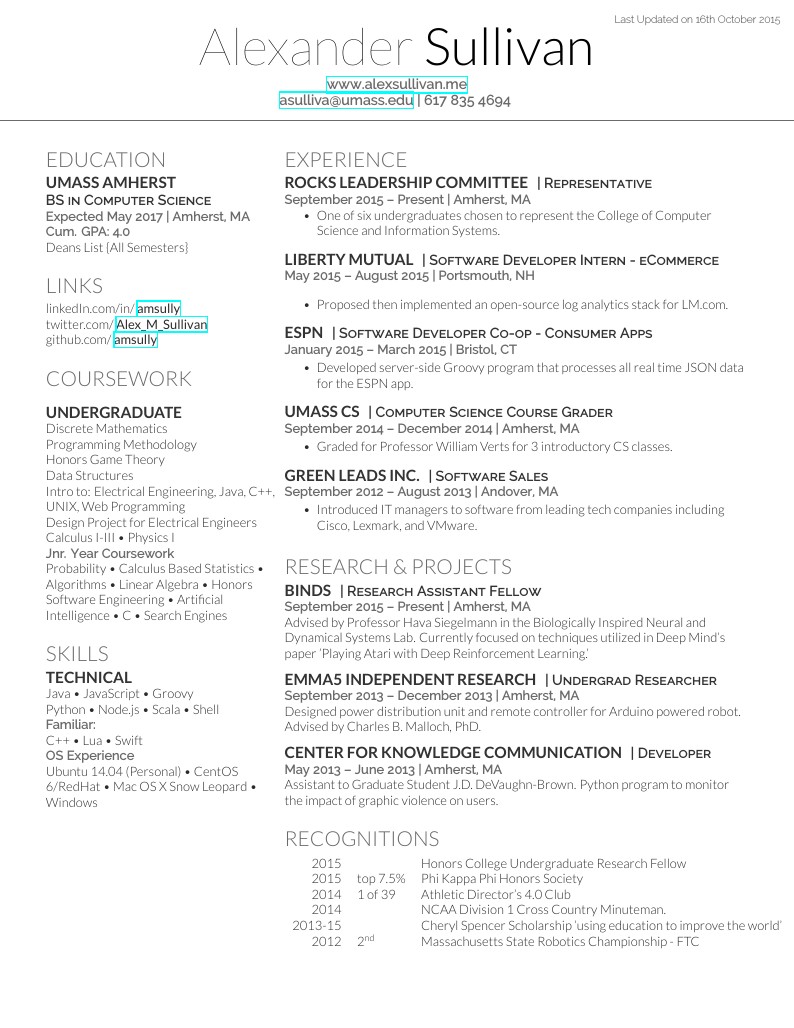overleaf template galleryLaTeX templates and examples — Recent
Discover LaTeX templates and examples to help with everything from writing a journal article to using a specific LaTeX package.

Modèle de devis de recherche en science politique en français à l'Université Laval. Ce modèle (template) s'inspire de d'autres modèles, avec des corrections notables au niveau du français (bibliographie, accents et autres)

This is an Unofficial Beamer Template for Abertay University, Dundee. For collaboration, check: https://github.com/Noktec/Abertay_Beamer_Template/

A simple font-awesome enabled CV or resume template. Automatically highlights specific author names in an attached citation list.

To be used for LaTeX Presentations in the ENS Paris-Saclay

Created using the Deedy CV/Resume XeLaTeX Template Version 1.0 (5/5/2014) This template has been downloaded from: http://www.LaTeXTemplates.com Original author: Debarghya Das (http://www.debarghyadas.com) With extensive modifications by: Vel (vel@latextemplates.com)

Formato de Informe de Práctica de la Escuela de Ingeniería Industrial de la Pontificia Universidad Católica de Valparaíso.

(c) 2002 Matthew Boedicker (original author) http://mboedick.org (c) 2003-2007 David J. Grant http://www.davidgrant.ca (c) 2008 Nathaniel Johnston http://www.nathanieljohnston.com (l) 2012 Arun I B http://www.ee.iitm.ac.in/~ee10s026/ This work is licensed under the Creative Commons Attribution-Noncommercial-Share Alike 2.5 License. To view a copy of this license, visit http://creativecommons.org/licenses/by-nc-sa/2.5/ or send a letter to Creative Commons, 543 Howard Street, 5th Floor, San Francisco, California, 94105, USA.
![[Uni Wue] Vorlage Studentenarbeiten, JP für Informationsmanagement](https://writelatex.s3.amazonaws.com/published_ver/10013.jpeg?X-Amz-Expires=14400&X-Amz-Date=20251225T214814Z&X-Amz-Algorithm=AWS4-HMAC-SHA256&X-Amz-Credential=AKIAWJBOALPNFPV7PVH5/20251225/us-east-1/s3/aws4_request&X-Amz-SignedHeaders=host&X-Amz-Signature=09876ed5830fa28aa0189217b27574c48a869e71c19c764494e246f20d873650)
Vorlage für Seminar-, Bachelor- und Masterarbeiten an der Juniorprofessur für Informationsmanagement, Universität Würzburg

山中 卓 (KEK、元大阪大学)が作成された科研費LaTeXを、坂東 慶太 (名古屋学院大学) が了承を得てテンプレート登録しています。 詳細はこちら↓をご確認ください。 http://osksn2.hep.sci.osaka-u.ac.jp/~taku/kakenhiLaTeX/
\begin
Discover why over 20 million people worldwide trust Overleaf with their work.